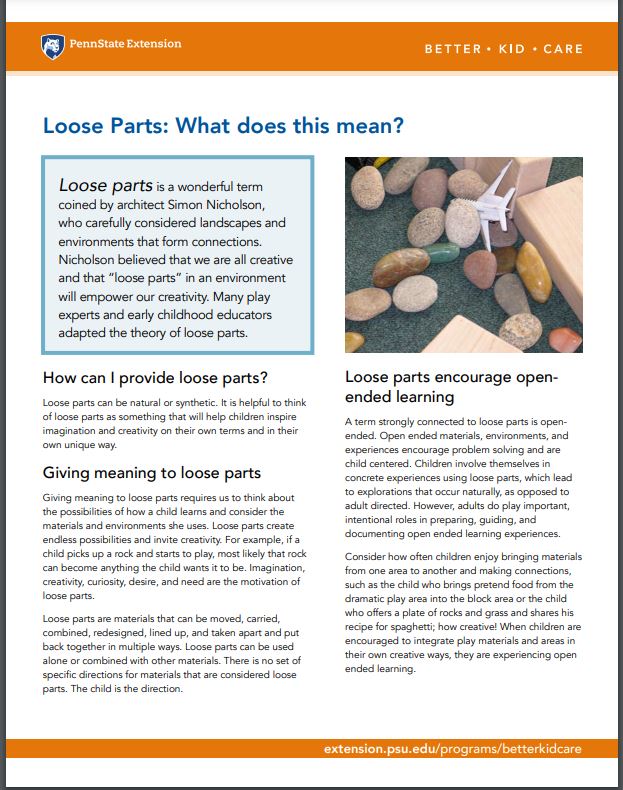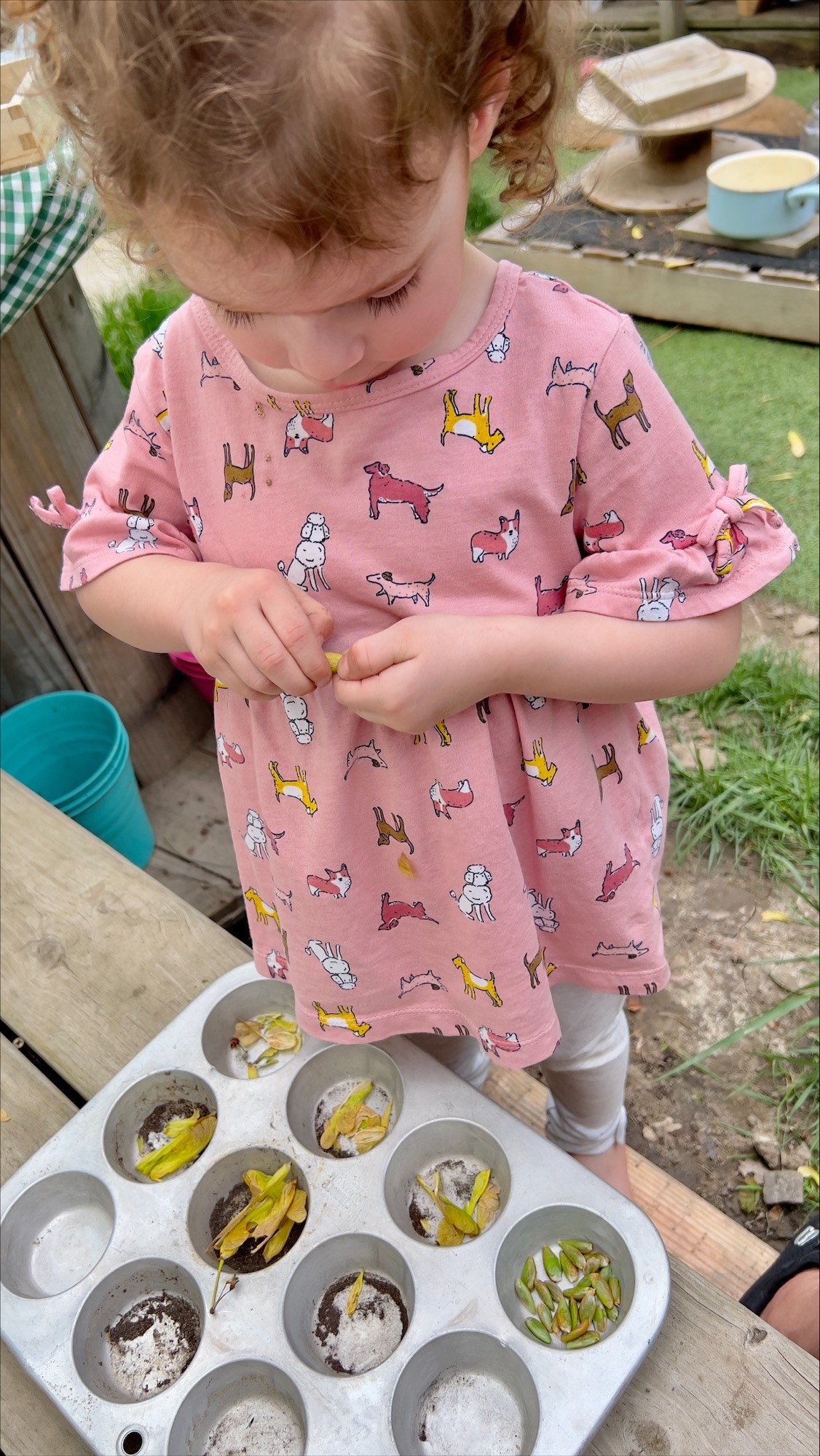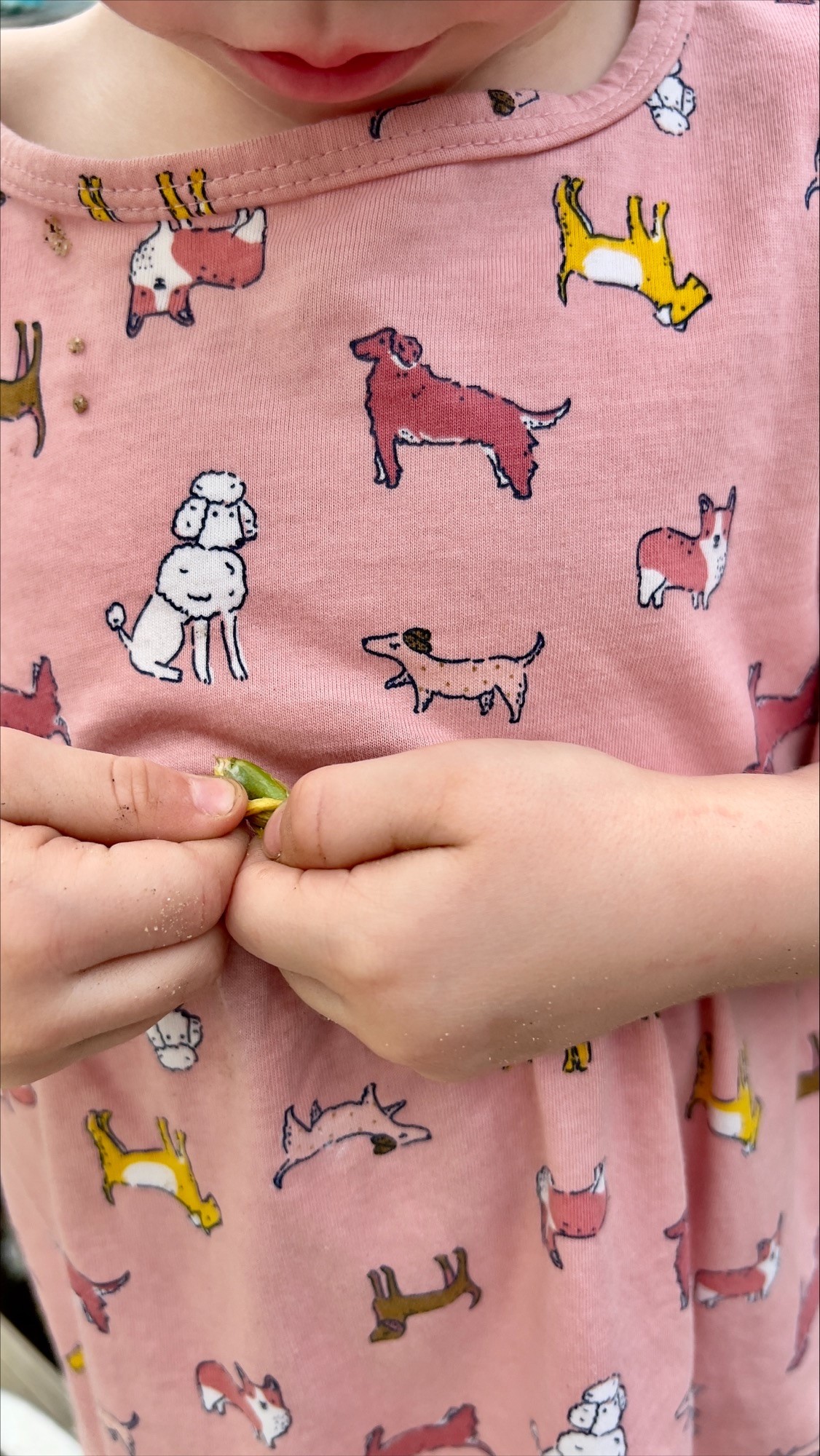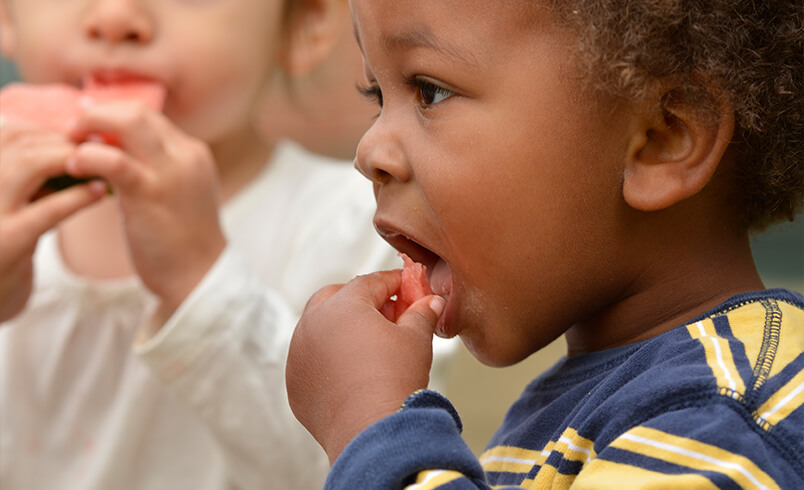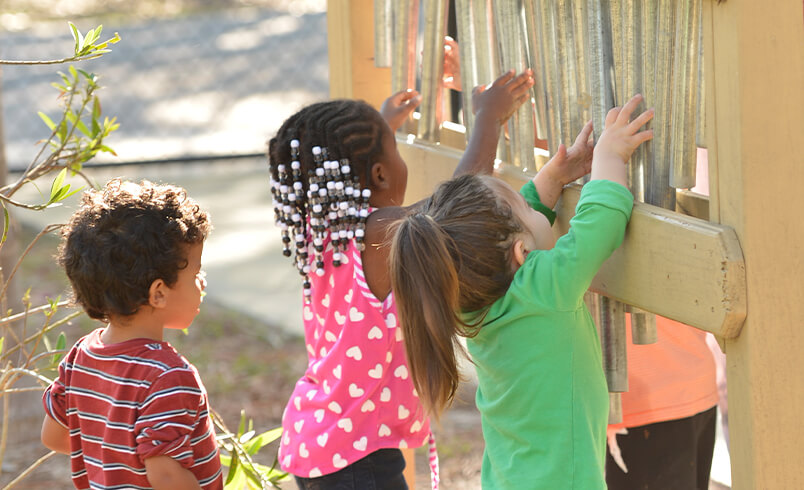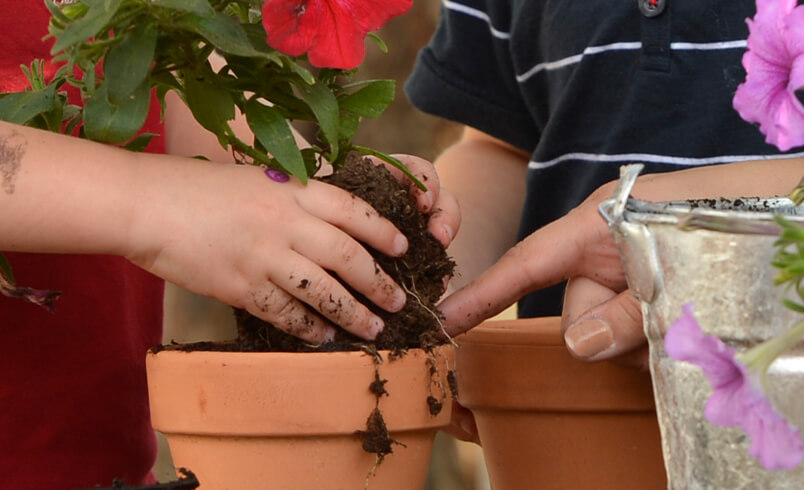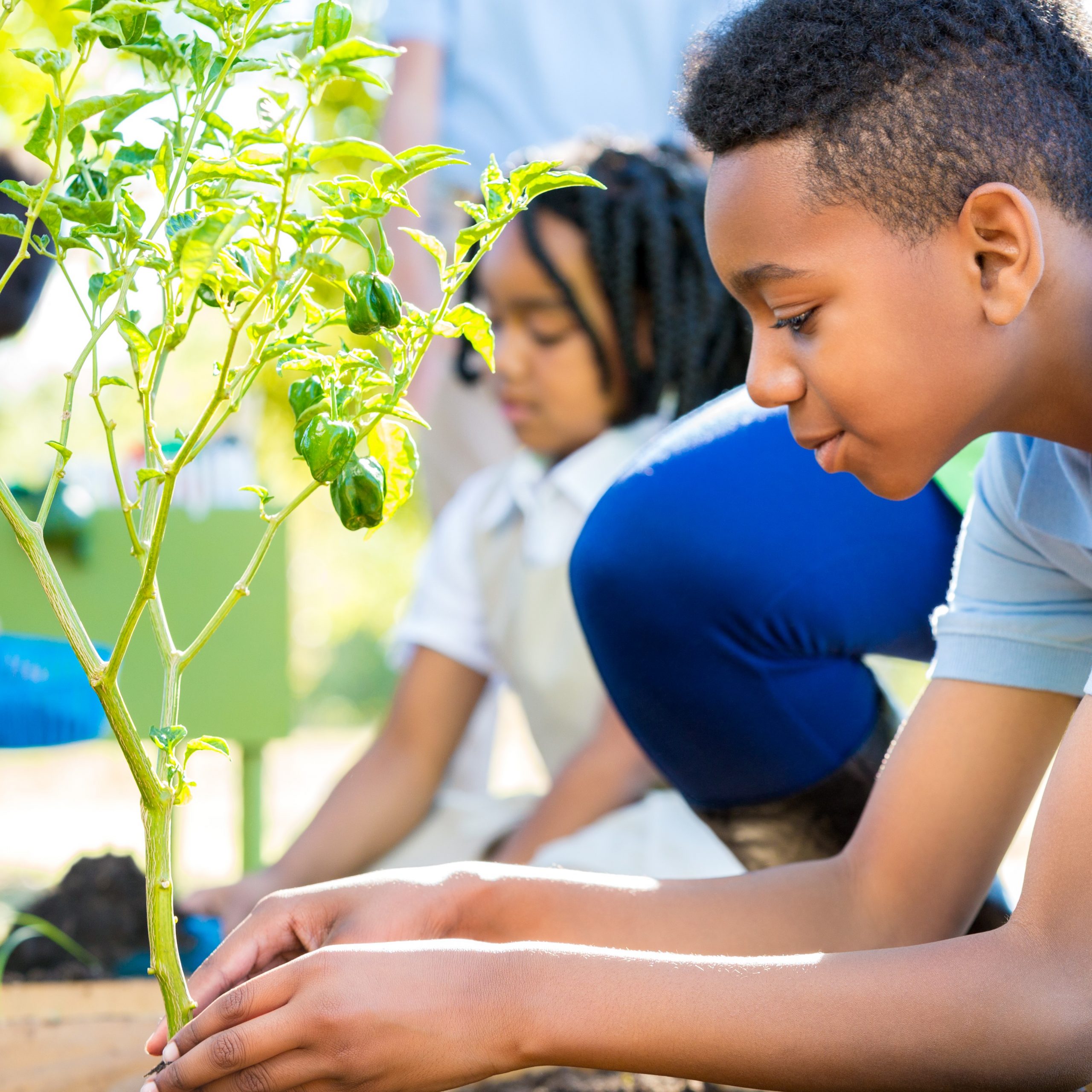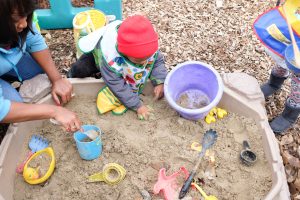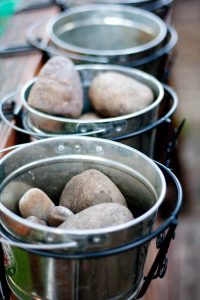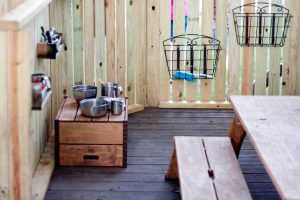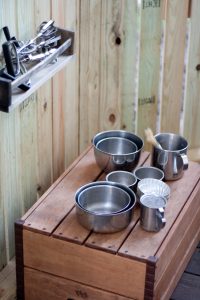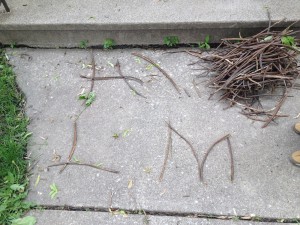Loose parts are materials that can be used in a variety of ways. Giving children the freedom to create, arrange, and construct as they want. Shifting the focus of the experience from product to process. Explore examples of loose parts and how to introduce them to children in this resource by The Penn State Better Kid Care Program.
Maple samaras or helicopters are winged seeds of maple trees; because of their shape, it is fun to see them fall and twirl in the air. Stephanie Mckinstry of My Caterpillar Clubhouse shares fun ways to utilize these seeds in your program.
Start by collecting the leaves, having children gather as many leaves as possible, and then setting them out so they can explore.
- Encourage children to toss them to see them twirl or to separate the leaf from the seed.
- Opening the seed and observing what they see, feel, and hear. You can also add a muffin tin or container to separate the leaf from the seed.
- They are a great addition to the mud kitchen, or incorporate them in your indoor dramatic play area.
- Use the seeds to count or create patterns.
- Once dried, they are an excellent collage material and can easily be glued or painted.
Get creative and encourage the kids to use their imagination!
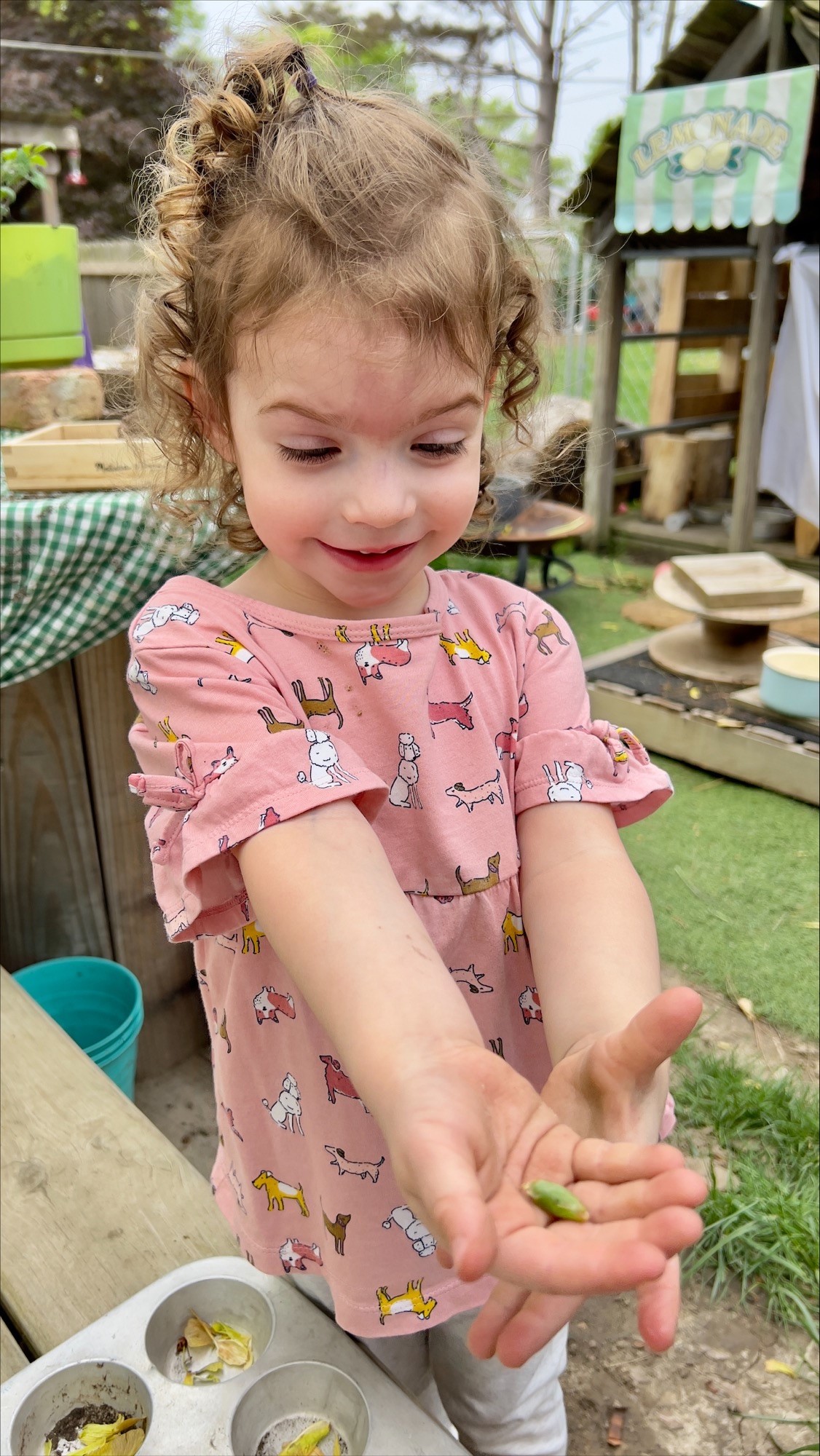
How will they be ready for kindergarten if they just spend their days outdoors playing?”
As educators we are often asked about kindergarten readiness by nervous parents, looking to give their children the best in an early childhood program. It is important that parents understand the vast amount of learning that is available when children are connected to nature. Young children learn primarily through their senses. The natural world, with its constantly changing and stimulating elements, provides the ultimate sensory learning environment.
Nature provides the ultimate sensory learning experiences.
When children use their senses as they explore their world through sensory play, they are actively building nerve connections in the brain’s pathways, which is crucial to brain development. And, when we slow down, we can also see all the learning and social skills that are being developed through play in nature.
The warm spring sun shines down on Elizabeth as she buries her nose in the fresh dandelions that surround her. James our sky watching investigator, points out the moving clouds and the moon that is visible this morning. Suddenly a flock of honking geese flies overhead, which instigates a group of children to run honking around the play yard flapping their arms.
Creating environments that give our youngest learners the time, space, and opportunities to explore and investigate will provide meaningful learning experiences. We can create engaging and wonder-filled environments that promote learning through all eight of their senses—auditory, gustatory, visual, olfactory, tactile, vestibular, proprioception, and interoception.
Auditory
“Listen! I hear a woodpecker!” calls Hudson, and the outdoor classroom quickly becomes calm as the children try to follow the sound of the pecking.
When children listen for and locate sounds in nature, it helps them understand that space is three dimensional. Birds call from high in the trees, the buzzing and humming of insects near plants on the ground attracts the attention of infants on their tummies. The children in our program often hear the horns of trains from across town or the steeple chimes from the college nearby, barking dogs in the neighborhood or the elementary students at recess down the block. These sounds force our children to slow down and follow the direction from which they came. By including bells, chimes, and your classroom musical instruments; you can add to the variety of sounds in your outdoor play space.
Gustatory
“We’re having a picnic!” shouts three year old Evelyn.
Food always tastes better outside. Eating outside strips away distractions and connects us to the flavors, the juiciness, and the aromas of our food and to nature. Sharing time outdoors with food also creates a sense of community between teachers and friends. There is something special about eating outdoors, even the exact same lunch. There is no rush, there are more stories, and more laughing. We spend longer periods of time around the table when we eat our meals outdoors. It’s magical. If lunch is an obstacle, start with a snack. If you don’t have a table, a good old fashion tablecloth or blanket on the ground will suffice.
Connect taste with nature by growing edibles from seeds or seedlings. Talk with your children about all the parts of a plant as you plant, nurture, harvest, and eat from your own garden. We started do a lot of container gardening once we realized our sunshine in the summer was different than when we planted it in the spring. This also gives you a chance to send your plants home over breaks if necessary. When our strawberry plants didn’t provide quite as many strawberries as we had hoped, strawberries from our local farmers market “may” have been added to the pickings on Strawberry Day. The same thing happened with our pumpkin patch, one year! We always want these to be enjoyable, successful adventures where everyone can join in the gathering.
Visual
I look over and notice our usually busy, James lying still on his tummy. A closer look, I see him watching a trail of ants carrying food.
Children who spend time outside in nature are less likely to suffer from myopia (nearsightedness) than their peers who spend more time looking at screens. Nature calls on us to look carefully and to focus at different distances. By providing magnifying glasses for close-up examination of bugs and leaves, children slow down and take observation much more seriously. Binoculars will bring faraway objects close, and kaleidoscopes and fish-eye lenses fuel a sense of wonder. By adding visually stimulating motion and color, with the use of banners, parachutes, and flags that flap and billow in the wind, we can capture the attention of little eyes to focus on wind patterns.
Olfactory
Two year old Eleanor is busy cooking up mint soup for the birds and squirrels. Always our concoction driven chef, Eleanor, is quick to make use of different plants to create the colors and smells she is sure will arouse the creatures of the neighborhood.
By incorporating plants whose blooms have distinctive, pleasing scents, we create places of beauty and wonder. Place gardenia and viburnum at key spots along pathways, jasmine near the front door, and lilacs outside of windows. We have herb gardens at our entrances that children and parents are invited to pick anytime. Catching a whiff of basil from a young friend is not at all unusual during our summer months! Include native plants that have unique qualities in fragrance, color, and texture. Check with your local city for possible rain garden grants that may help you finance pollinator or native plant gardens for young children. Our program was able to create a dry creek rain garden area, full of pollinating, native plants that brought butterflies and hummingbirds to our play space. Many cities are giving away rain barrels which will give you access to water for plants and water play.
Tactile
“Come feel how soft this flower is!” invites three year old Evelyn to her friends nearby.
Our skin is the largest organ of our bodies, making touch a vital source of stimulation. Tactile engagement is crucial, especially for babies. Connecting with plants and soil can begin early. Babies soak up sensory experiences in and near the garden. Hands and bare feet need to experience different characteristics and temperatures. Nature is rich in texture and tactile variety— bark on trees and shrubs can be rough, smooth, bumpy or thorny. Leaves can be sticky, fuzzy, delicate, or veiny. Stones can be smooth, round or jagged. Providing our young learners with these spellbinding opportunities, creates strong nerve connections that are hard to duplicate indoors.
Vestibular
“Watch me fly! I am a superhero!” Three year old James is pushing off with his feet and swinging high on his belly.
The vestibular sense, based in the inner ear, is related to balance. A well-developed vestibular sense helps us to understand where our body is in space. We are huge proponents of swings and belly swinging. Children with a poorly functioning vestibular sense may consistently run into things, trip a lot, and frequently fall. Experiences that develop the vestibular sense include swinging, swaying, bouncing, rocking, and rolling. The vestibular system helps with spatial awareness, attention, visual skills such as reading and writing, and emotional regulation. By including bench swings, hammocks, rope swings, tire swings, and baby swings, you will be strengthening the vestibular sense that makes paying attention and sitting still for short periods of time a possibility for our busy young friends.
Proprioception
The sense of proprioception informs us of our body’s position in space. The receptors for this system are found in our muscles and joints and they send information to our brain about where our body is and how much force we are using. This is the sense we need to understand how to gently hold a friend’s hand, play tag without tagging too hard, pet an animal, or make a light or dark mark on the paper. When children use their muscles and the force of their bodies to push, dig, roll or lift heavy things, they become aware of their own bodies’ capabilities.
“Benjamin pushed me down!” a sobbing four-year-old, reports as tears run down her cheeks. I look over to see four-year-old Benjamin crying just as hard, if not harder.
Proprioception is important in building body awareness and achieving motor milestones. This is why tummy time is so very important for infants. Shoveling in the sandbox, moving stones to make a fort, or carrying buckets of water will all benefit our children. When we use our muscles it creates strength, and resistance is put on those proprioceptive receptors in the joints and muscles.
Introception
“I am so thirsty!” exclaims five year old, Lauren, as she rushes to the pitcher of water to fill a cup.
Just as there are receptors in your muscles and joints that make up our proprioceptive system, there are also receptors inside your organs, including your skin. These neurons send information about the inside of your body to your brain. Are you hungry, thirsty, hot, or cold? Do you need to use the bathroom? Is your heart racing or at a normal pace? The calmness in outdoors may help children recognize these signals and learn to listen to their bodies. We encourage our young learners to slow down and listen to their bodies.
In a natural environment, sensory learning happens naturally.
Outdoors is the perfect environment to observe and understand the senses that make up our young learners. By taking a minute to look at your outdoor environment and assess what it offers, you can address the changes that might be beneficial—even if it’s planting some herbs, adding a chime, or providing binoculars. Let’s celebrate and embrace the power of outdoor learning for young minds by designing simple, wonder-filled gardens of opportunities.
Article courtesy of Community Playthings
Nature Play as an Everyday Joy of Childhood
For Kids, Frequency Requires Proximity
Most of us who enjoyed nature play in our childhoods realize that it didn’t matter if we had a pristine patch of forest to play in or just a couple of vacant city lots. Either way, there were endless things to find, explore, capture, imagine, and play with. But what was important is that these places were right there, within our walking/running/biking distance. No car, no parent, and no schedule were needed to get outside and play in nature.
The children and nature movement is fostering wonderful new ways for kids to play outdoors, such as designed natural playspaces, family nature clubs, and naturalized schoolyards. These and other similar efforts are valuable steps — not only for the kids, but for parents who are re-considering their children’s indoor, nature-deprived lives. Yet most of these new approaches are challenged in one vital dimension: frequency.
When Dr. Louise Chawla (University of Colorado) researched influential childhood experiences in nature, she found that, “The special places that stood out in memory, where people formed a first bond with the natural world, were always a part of the regular rhythm of life.”1 Those powerful experiences didn’t typically come from annual family camping trips, but rather from day-after-day, week-after-week events in children’s lives. Actually, no special research is needed to realize that frequent childhood activities have more lasting impact than ephemeral ones. For instance, practicing the violin once a month is not a very effective strategy! Is it better than nothing? Perhaps — but only if you set your sights very low.
The same equation applies to nature play. If we want it to have maximum impact, then it needs to be “part of the regular rhythm of life.” It seems unlikely that we can achieve this solely through monthly meet-ups or widely scattered playspaces — strategies that require parents, cars, and calendars, and thus compete for time within families’ hectic schedules. Are these approaches valuable? Absolutely! Are they sufficient? Unlikely.
If we really want to power-up nature-based play, it needs to be available where children can enjoy it almost any day, without adult involvement or confining schedules. For most kids this means either home yards or neighborhood parks — and (sadly) only the former is likely to alleviate the fears of 21st-century American parents. Can a typical quarter-acre suburban yard actually support nature play? Or a city lot half that size? Or an apartment courtyard? The answer is yes, especially for kids of about two to eight years old. Younger children’s worlds are much smaller than those of adults. They don’t need sprawling spaces or eye-popping vistas. Their attention naturally focuses on tiny and manipulable pleasures: on dandelions rather than rose gardens; on earthworms rather than herds of bison; on a patch of dirt to dig in rather than a yawning cave to explore.
Unfortunately, the typical American yard is no haven for nature play. Good nature play requires “rich” settings — that is, a diversity of plants, animals, and landforms that create endless opportunities for discovery and engagement. Turf grass lawns, solitary shade trees, and a few neatly trimmed shrubs do not meet these criteria. However, even the sparest yard can be augmented for good nature play with a little thought, a dose of elbow grease, and much less money than what those elaborate backyard play sets cost.
The key is to create yards with a “density of diversity:” a collection of micro-habitats that will harbor lots of natural discoveries and delights throughout the seasons. These micro-habitats might include a shrub thicket, a wildflower garden, a jumbled pile of boulders, a tiny garden pond, a butterfly garden, a berry patch, a mass of tall native grasses, or even a space allowed to just grow into whatever comes up! Once you’ve established a few of these tiny worlds in your yard, you can enhance them with a digging pit or a giant dirt pile, a couple of large logs, bird and toad houses, a bench or hammock in a quiet nook, and plenty of “loose parts” to nurture creative and constructive play. These loose parts can be branches, driftwood, cattails, bamboo poles, boards, tree cookies (log slices), tarps, seed pods, pine cones, large boxes, hay bales, and whatever else you can readily scrounge up.
By focusing your primary efforts on creating multiple micro-habitats, you will ensure authentic nature play: interactions with real nature, in all of its beauty, wonder, unpredictability, and adventure. Manufactured outdoor play components — like the plastic play equipment designed to look natural — do not create the same connections to the natural world. Kids can’t peel the bark off a plastic log to find rolly-pollies, and they won’t find monarch caterpillars feeding on fiberglass leaves. In fact, one big, over-grown wildflower bed — or a patch of flowering shrubs laced with tiny paths — will bring more lasting and real nature play to your kids than will any human-made product!
Note, though, that nature playscapes are more “messy” than most home landscaping, so you may want to keep much of your nature play zone in the backyard where it won’t generate hostility from neighbors who think front yards should look like golf greens. However, certain nature play features are usually “dressy” enough to bring into front yards, like butterfly gardens, boulders, and herb gardens. And by highlighting street-side nature play, you may encourage other local parents to think more about “kid-scaping” their own yards. Nature play zones get better and better when more of your neighbors imitate and add to your own efforts!
None of these steps towards home-based nature play require great knowledge, training, or expense. They can be implemented bit by bit, and your plans can be in constant flux as you discover what your kids and their friends most enjoy. The ultimate goal is to create enough nature play “critical mass” so that your kids are excited to play in their own yards — day after day, and whenever they wish. Then nature play will be a regular joy for your children; then it will achieve the frequency needed to influence and benefit them for decades to come!
Article courtesy of Community Playthings
Town Square Research to Practice Statements offer information from theory and research with examples and suggestions for what it means in your work with children.
What are open ended materials? How can they be incorporated into your space to promote children’s development?
Looking for a new way to support outdoor play? Chantelle Simmons, owner of Under the Oak Tree, sent these ideas for organizing natural materials and creating a play kitchen outside.
“We placed small metal buckets in plant pot holders on the railing to organize our natural materials. We change what are in the buckets quite often. In the picture, there are different types of stones. We also use them to hold acorns, pinecones, seed pods, as well as a variety of other natural materials. We also re-worked an area making it into a kitchen-like environment. We have more plans to extend this area. We have hung garden hose baskets on the wall to hold watering cans, tools, and kitchen items.”
Ask children to gather sticks (if outside) or provide Popsicle sticks or straws (if indoors). Then have children create shapes or letters using the sticks. Talk about the number of sticks you need to create specific shapes or letters and encourage the children to talk together about what they made.
Goal: Children will use sticks to create shapes and letters

